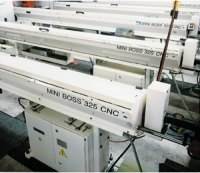Sizing Up The Management Challenge
The demand for extremely small precision components is growing. A look at one company's thrust to meet this demand reveals what it takes to run a micro machining business.
Remmele Engineering is no stranger to the pages of this magazine. This company, which has a half dozen machining plants in the greater Minneapolis area, excels in numerous metalworking activities and is considered one of the country's best and most diverse job shops. Remmele is perhaps best known for its innovative approach to the high speed machining of large aluminum airframe components and has been the subject of several articles on this topic.
However, Remmele has a growing reputation in the field of micro machining. The company began to look at micro machining in the early 1990s, then made the decision in 1997 to devote one of its plants entirely to the production of very small precision parts. This location, Plant 30, is next door to one of the company's other plants near Big Lake, Minnesota. It so happens that this other plant handles some of the largest work that Remmele takes on—workpieces weighing up to 100 tons and as long as 100 feet.
Plant 30's specialty, in contrast, is work that is roughly no larger than one cubic inch and often under one millimeter in length—about the size of a pinhead. John Bowden, one of Remmele's VPs and head of the company's micro machining division, has a clear idea of what it takes to be successful in this aspect of metalworking. A recent discussion with Mr. Bowden showed that managing the micro machining shop is a matter of paying attention to the important things, which often contrast with the priorities in other aspects of machining. Very small parts can be difficult to see, difficult to handle, and difficult to measure. The assumptions and expectations valid in general machining may or may not hold in the realm of micro machining.
One Definition Of Micro Machining
The term micro machining has no standard definition, Mr. Bowden explains. At Remmele, it means parts smaller than a one inch cube mainly because that's how the company finds it convenient and appropriate to divide work among its four divisions (General Machining, Automation and Repetitive Batch Machining are the other three).Plant 30 is home to about 25 Swiss-type CNC turning centers, mainly Cincom machines from Marubeni Citizen. These machines represent the chief machining capacity of this plant. Several machining centers complement the turning equipment. A uniquely designed micro laser processing system is also located here.
Although sub-millimeter workpieces such those in Figure 1 are this plant's forté, complex, tightly toleranced machined parts in sizes above 1 millimeter and produced in mid to high volume are a mainstay. One example is shown in Figure 2. This has proven to be a healthy mix of work. On one hand, skills developed in the sub-millimeter jobs, where tolerances are typically ±0.0001 inch, carry over to "larger" parts.
About 95 percent of Plant 30's production is for the medical industry. Mr. Bowden expects the medical industry to remain a strong consumer of sub-millimeter parts as trends in medical research continue. For example, researchers are developing a host of new instruments small enough to insert through catheters for minimally invasive surgical procedures. Telecommunications and fiber optics are also likely to create a growing demand for micro machining.
Facilities Management
Attention to housekeeping is important in any plant, but it is especially important when dealing with micro machining. Cleanliness in Plant 30 is maintained scrupulously. "We had the floor stripped and resurfaced when the building was converted." Mr. Bowden notes. "The light, high gloss finish doesn't let you get behind on a cleaning schedule," he explains. Walls are also painted in glossy, light colors.
The reflective surfaces of the walls and floor were chosen to enhance overall lighting in the building's production areas. New lamps were installed to provide even, glare-free lighting throughout. Lighting makes a difference when working with small parts and fine detail and is essential for bench work, where parts are routinely inspected with microscopes.
All of the machine tools in this building are fully enclosed and equipped with mist collectors. The heating and air conditioning system is designed to maintain an even temperature (±2°F) throughout the shop area. Strict climate control is required because thermal changes have an exaggerated effect when tolerances measured in "tenths" are the rule.
The bright, freshly scrubbed appearance of the plant has an additional value. "With most of the work related to the medical industry, customers expect a laboratory-like setting in this production facility," Mr. Bowden explains. With its strong lighting and stringent orderliness, it has even been compared to a surgical suite, he says, a favorable comparison that is certainly welcome.
Operations Management
Completing parts in one setup is a common theme being emphasized throughout metalworking today. One would certainly find this true if the Remmele plants represent a cross section of the industry. For micro machining, however, "done-in-one" takes on an added dimension.
"Many of our workpieces are simply too small for effective handling," Mr. Bowden explains. "Performing secondary operations off the original machine is not an attractive option due to the likelihood of locational errors," he continues. For this reason, almost all of the Cincom lathes are equipped with subspindles and live tooling.
Live tooling on these lathes is a major asset, allowing the screw machines to function as miniature turnmill machines in many cases. This approach simplifies workholding challenges because the bar feeder and spindle chucks solve the difficulty of loading and positioning very small workpieces.
Deburring is an operation that gets considerable attention. Brushes of various diameters can be spotted in tool turrets and on tool slides in the screw machines. "We've devoted a lot of time to testing and developing our deburring techniques," Mr. Bowden claims. "For example, finding the right combination of bristle type, brush speeds and feeds, and so on is not unlike finding the best feeds and speeds for a cutting tool," he says. The goal is to produce, on one machine, parts that require only cleaning, inspection and packaging after cutoff and release into the parts catcher.
The whole issue of burrs on workpieces is critical, one that has to be dealt with carefully and thoroughly in micro machining, Mr. Bowden warns. When a customer specifies a "burr-free" condition, the precise definition of "burr-free" has to be spelled out, with no uncertainty remaining about what is acceptable or unacceptable. According to Mr. Bowden, Remmele has compiled a comprehensive handbook on burrs that classifies types of burrs, lists the techniques for removing those burrs, specifies methods of verifying that the burrs have been removed, and so on. This handbook has proven to be an invaluable resource for establishing agreement during production planning and for avoiding problems when parts are received by customers.
"It is not unusual for customers to turn to us to recommend how to handle burrs and establish procedures based on our experience," Mr. Bowden says. "The main thing is not to underestimate the importance of deburring from the start," he emphasizes.
Proper handling of material is another item in micro machining that might not be recognized as a priority. At this plant, most workpieces are produced from bar stock, which is always delivered in a ground, heat-treated and straightened condition. Material storage is maintained inside the production area under the same climate control as the rest of the shop. Bars are stored in cardboard or PVC tubing to prevent marring or sagging. Even when bars are moved to the machines, provisions are made for supporting them along their full length. "We don't have the luxury of ‘machining out' any out-of-round, off-center or non-straight conditions." Mr. Bowden explains.
Part cleaning and packaging also get their due. Wherever possible, parts are cleaned and packed at the work bench near where they are machined. Each work bench is equipped with an ultrasonic cleaner. In some cases, the company has had to design special holders for parts that would otherwise slip through the openings in mesh containers for submersion in the cleaning bowls. The company has also designed unique packaging for micro machined parts. Special "egg crate" designs, for example, protect delicate features and create convenience for the customer.
Quality Management
Perhaps the most challenging issue in any operation is quality assurance. All of Remmele's plants are ISO-9000 certified, so process integrity serves as the best assurance of consistent quality. However, micro machining poses its own set of inspection and quality challenges. In this plant, parts are often smaller than the tolerance bands normally dealt with in Remmele's other plants.
Plant 30 relies heavily on optical measurement techniques. In addition to the inspection microscopes at each workstation, the shop has invested in such state-of-the art optical equipment as the Mycrona Primus digital measurement system. This system is designed for small parts and features multi-sensor capability. It can measure complex three-dimensional geometries with a touch probe. However, the system can also operate in the non-contact mode as an optical comparator or as a laser scanning system. The system has a resolution of 0.1 micron. Digital imaging capability allows the system to compare scanned data with the corresponding CAD file of part geometry.
Expertise at measuring dimensions must be complemented by expertise at measuring surface finish. Non-contact techniques are essential because sub-millimeter workpieces may not tolerate contact with a touch probe or stylus. Agreement about surface finish specifications is another one of those items that should be carefully established before production begins, Mr. Bowden recommends
Synergy
As part of an organization deeply involved in other types of machining, Plant 30 has an advantage that other shops in micro machining are unlikely to enjoy. "We've learned from our other divisions," says Mr. Bowden. Apparently, lessons carry over in some interesting ways.
For example, Remmele has developed considerable expertise in the machining of titanium with its successful efforts to serve the aerospace industry. Titanium is an ideal material for advanced airframe designs, thanks to its highly favorable strength to weight ratio. It is an extremely tough material to machine. However, titanium is also an ideal material for implantable medical devices because it is highly compatible with human tissue, resists wear and corrosion, and is extremely strong.
"We apply what we know about machining large titanium workpieces to small ones such as a family of bone screws and prosthetic joint components, says Mr. Bowden, citing one example. He points out that the machinability characteristics of a workpiece do not "scale down" whether the part is measured in meters or millimeters. Optimum surface speeds for machining this material remain the same, regardless of the diameter of the cutting tool, for example. "Of course, with micro cutting tools, the spindle rpm necessary to achieve that surface speed goes up proportionately," he notes. "Finding spindles with sufficient rpm is an ongoing challenge."
High speed machining techniques can be applied to small workpieces. Remmele is exploring this process for producing lightweight titanium honeycomb structures that promise to reduce weight in satellite construction. See Figure 3. A light depth of cut and high spindle speed allow thin walls to be machined. The same dynamics are at work as are in a pocketing operation on a 20-foot wing spar—low cutter side pressure protects the thin wall during machining.
Finding sources of cutting tools for micro machining can be a struggle. The requirements are the same as for general machining. "You want a source that is reliable and consistent, with tools that are accurate," Mr. Bowden says. "We routinely drill holes under 0.01 inch in diameter. This is an unforgiving operation. If the drill point is not on center, the point will break on contact with the workpiece. Not many manufacturers can manufacture drills this size and meet that specification."
Eyes Open
As a plant manager, Mr. Bowden also notes the importance of keeping an eye on broad industry developments—the big picture in which micro machining fits. In a world where supercharged business cycles can create opportunities overnight, this vigilance is well warranted. Manufacturing technologies can become obsolete in as short a time as well.
Additive processes in which microscopic components are built up of successive etched layers may supplant machining processes, for example. On the other hand, assemblies of these components may require sub-millimeter housings, a new market for micro machining.
Mr. Bowden believes that the best preparation for a rapid response to these changes is to invest in advanced plant equipment, as well as all in the skills of the plant's workforce. "You can't rely solely on access to the latest tools to set you apart. It's the experience and creativity of machinists and engineers that make the difference," he says.
Read Next
Shop Automates Small Diameter Machines
'Processes, not prayers' is a slogan at Starro Precision, a screw machine shop that's taking off like a rocket fueled by tightly focused growth and strategic planning. The use of appropriate technology, including automated bar feed systems, helps maximize resources.
Read More5 Rules of Thumb for Buying CNC Machine Tools
Use these tips to carefully plan your machine tool purchases and to avoid regretting your decision later.
Read More

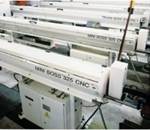


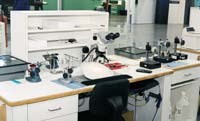

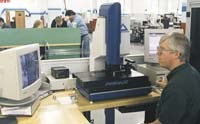
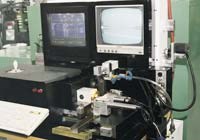
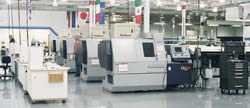
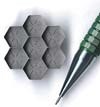
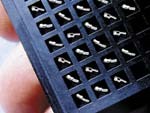
















.jpg;maxWidth=300;quality=90)


